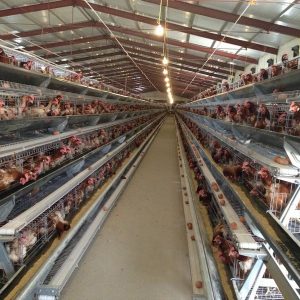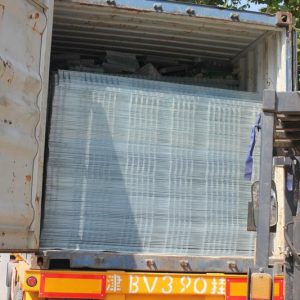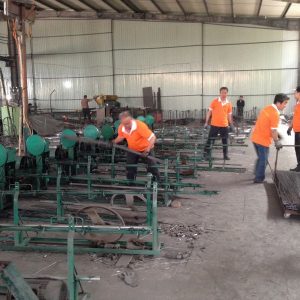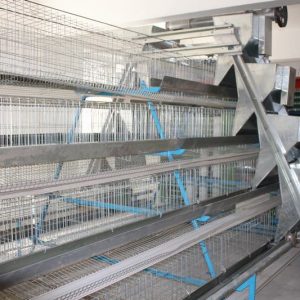
Summer feed anti-mold management technology
In summer with high temperature and high humidity, the feed is prone to mildew during processing, storage, transportation, sales and use. Moldy feed not only reduces the nutritional value and palatability of the feed, but also damages the animal body and leads to immune suppression. Causes a drop in egg production rate, poor egg quality and even death, which seriously affects layer production.
Therefore, moldy feed has become a pain in the hearts of farmers. They have invested a lot of money in demolition of feed and adopted various measures, but the results are not satisfactory. So, whether moldy feed should be mold-proof or mold-free, and how to most effectively reduce the pollution of mycotoxins to feed is worthy of in-depth research in the industry.
1 Mold growth conditions
Mold is a part of fungus, and some molds can produce mycotoxins in food, which can cause harm to the organism of animals. The growth of mold is affected by factors such as temperature, humidity, moisture content, PH value, and ventilation conditions.
Most molds are moderate-temperature microorganisms, the optimum temperature for growth is 20-30℃, and the optimum temperature for reproduction and toxin production is 25-30℃. When the relative humidity of the air is lower than 75%, the growth of mold is inhibited and grows rapidly at 80%-100%. In the environment of high temperature and humidity, the growth and reproduction of mold is most vigorous. When the feed moisture exceeds 13-14%, it is conducive to the growth of mold; when the feed moisture is greater than 15%, the mold multiplies and grows. The optimum pH value for mold reproduction is 4.5-5.5, and the pH value can grow from 1.5-8.5. The pH value of 0-1.5 and 8.5-14 can inhibit the growth of mold.
Two prevent mildew
To prevent feed mildew, the growth and reproduction of mold must be blocked.
1 Strictly control raw materials
As long as the conditions are right, the mold will grow and reproduce. Especially for corn, its embryo occupies 1/3 of the volume of the whole grain, and it has great respiration and strong hygroscopicity. The respiration intensity of corn is 8-11 times that of grain crops such as wheat and rice. Therefore, under the same temperature and humidity conditions, corn is more prone to mildew than grains such as rice and wheat.
Mold is often produced during the growth stage of corn, so-called field mold. New corn has a high water content, and it is prone to mildew if it is not threshed and dried in time after harvest, especially in the weather with continuous high temperature and rain.
Therefore, it is necessary to prevent moldy raw materials from entering the factory (field). If possible, it is best to test each batch of raw materials to strictly control the moisture and moldy rate of the raw materials. Excessive moisture will not only cause mildew, but also increase crushing. cost.
2 Strengthen transportation management
If the feed is rained or soaked during transportation, it is prone to mildew. If exposed to the sun during transportation, the temperature of the feed will rise, causing the moisture inside the feed to evaporate. When the ambient temperature drops, a temperature difference will be formed between the environment and the feed, so that a layer of “soda” will form on the edge of the feed packaging bag. , Resulting in increased moisture in the edge of the feed packaging bag and mildew.
Therefore, during the transportation of feed, whether it is sunny or rainy, protection must be done to avoid rain or direct sunlight. At the same time, handle with care during transportation, so as not to scratch the packaging or damage the inner membrane to affect the feed quality.
3 Do a good job of storage
The warehouse where the raw material (feed) is placed should be spacious and well ventilated. It is best to isolate the ground with a wooden frame about 10 cm high, and the ground should be waterproofed or covered. It is best to control the indoor temperature at about 15°C and the humidity at 70%. the following.
The raw materials (feed) are used according to the first-in, first-out principle, and the appropriate storage period is determined according to the characteristics of the raw materials. It is best to prepare the raw materials on the same day and use them on the same day to ensure that the raw materials are fresh to prevent the storage period from being too long and moldy.
4 Pay attention to the quality and hygiene of the processing process
During the processing of compound feed, the temperature and moisture of the finished product should be strictly controlled, and the temperature of the pellets from the machine should not be higher than the room temperature 3℃~5℃. In the high-humidity season, the feed water content should be controlled below 12.5%. When the water content exceeds 13%, the risk of feed mildew will increase.
At the same time, keep the silos and pipelines clean, regularly remove the accumulated materials in the silos and pipelines, to prevent mold contamination during the feed production process and mold materials falling off into the finished product warehouses and packaging bags, causing feed to mold.
5 Add anti-mold agent
There are many types of antifungal agents, divided into contact type and gasification type. At present, the gasification type is used less in production, and the contact type is more widely used. The most used contact type is organic acids and their salts, mainly propionic acid and its salts, sodium diacetate, formic acid and its salts, sorbic acid, fumaric acid, citric acid, etc. Propionic acid and its salts are the most commonly used. It can not only form a high osmotic pressure outside the mold cells, dehydrate the cells and lose fertility, but also penetrate the mold cell walls to inhibit enzyme activity and prevent mold reproduction.
Different types of antifungal agents have different mechanism of action and use effect. Different temperature, humidity, moisture content and shelf life have different usage amount of antifungal agents. It depends on palatability, antifungal effect, cost performance, irritation and corrosiveness. Reasonable choice, the amount of addition should be determined according to the specific situation. The use of anti-fungal agents must be evenly mixed, otherwise, some feeds may be mildew without anti-fungal agents, and the palatability of livestock and poultry may be affected by excessive anti-fungal agents in the other feeds.
6 Do a good job in feeding management
In the process of raising livestock and poultry, ensure that the air in the livestock (poultry) house is good and the internal temperature is appropriate through appropriate means. Check the quality of the feed before feeding, eat a small amount of meals, high temperature and high humidity season, the feed is used up that day. The material trough should be cleaned frequently, especially the automatic feeding system, the storage tank and the material line should be cleaned regularly to prevent the accumulation of material from mildew.
Three summary
To do a good job in the prevention and control of mold, the focus is on prevention, starting from the source, starting from the quality of raw materials, processing, storage, transportation, and use. Only in this way can the effect of controlling mycotoxin pollution be truly achieved. Use mold release agents , Is just a last resort remedy after the feed is mildew.



